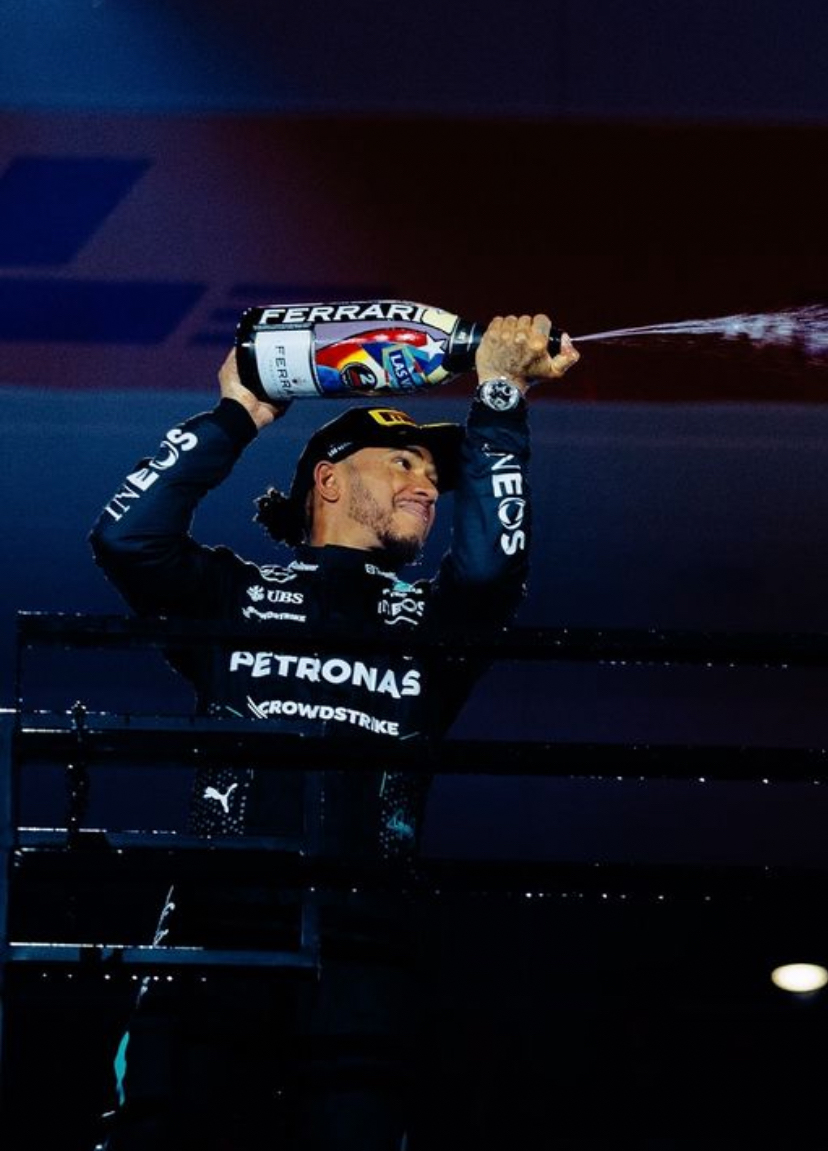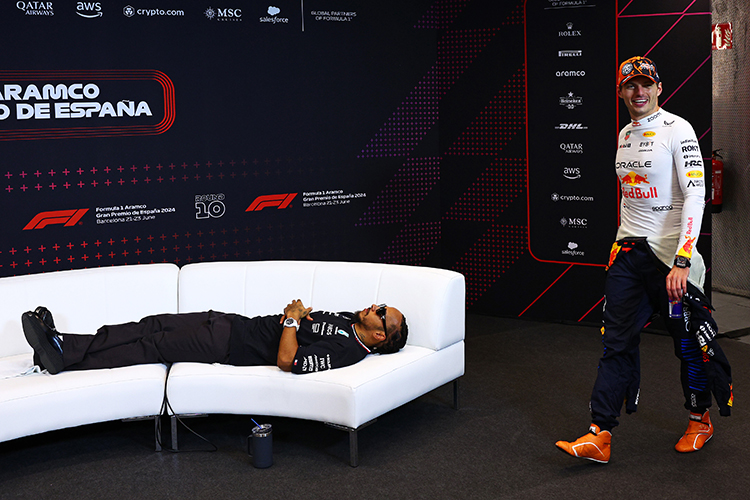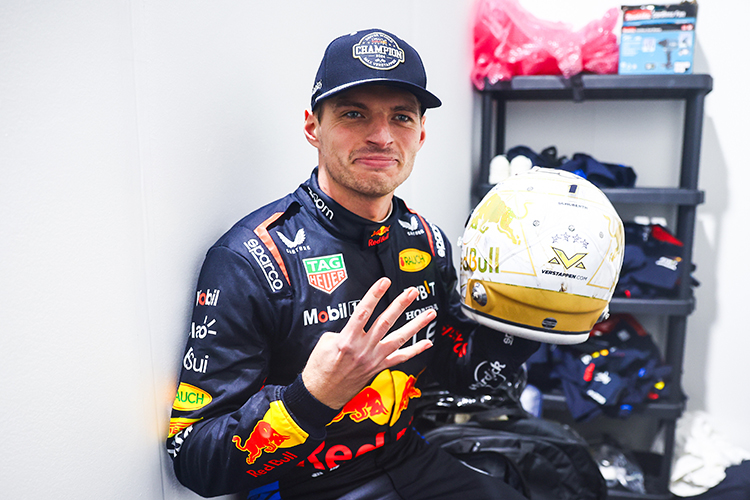How Augmented Reality and Virtual Graphics are Revolutionizing F1 Broadcasts

Formula 1 World Champions: A legacy of racing legends
How has the use of augmented reality (AR) and virtual graphics impacted F1 TV broadcasts?
Discover how augmented reality (AR) and virtual graphics are transforming Formula 1 broadcasts, enhancing fan engagement, race strategy visualization, and technical insights for 2024.
The Impact of Augmented Reality and Virtual Graphics on F1 TV Broadcasts
Formula 1 has always been at the cutting edge of technology, and its TV broadcasts are no exception. In recent years, the integration of augmented reality (AR) and virtual graphics has transformed how fans experience the sport, bringing them closer to the action and providing a deeper understanding of the race's technical and strategic elements. Here’s how AR and virtual graphics are reshaping F1 broadcasts for the 2024 season.
1. Bringing Technical Insights to Life
Formula 1 is known for its technical complexity, but explaining intricate car mechanics or race strategies has often been challenging. Augmented reality and virtual graphics are changing that by making these technical aspects visually engaging and easy to understand. AR allows broadcasters to overlay important information, such as tire degradation, fuel consumption, and braking performance, directly onto the race coverage. Through three-dimensional car models and simulations, fans can see how various components, like aerodynamics and engine performance, affect the car on track.
2. Enhanced Race Strategy Visualization
AR and virtual graphics have significantly improved the way race strategies are presented. These technologies allow broadcasters to visualize pit stop strategies, tire choices, and overtaking opportunities in real-time. Key tactical decisions, such as the optimal time for pit stops or when a driver should make a move, are now illustrated with dynamic graphics that show projected gaps, pit stop times, and race scenarios.
One standout feature is the "ghost car" effect, where fans can compare the performance of different drivers by simulating side-by-side laps. This visual comparison helps fans understand the critical moments in a race and the impact of each strategy decision.
3. Real-Time Data to Enhance Viewer Experience
Formula 1 is a data-driven sport, and AR makes real-time telemetry data available to viewers in an engaging way. Speed, throttle position, gear shifts, and G-force can be overlaid on the broadcast, allowing fans to see exactly what drivers are experiencing during the race. Additionally, essential race data such as track temperatures, tire conditions, and weather forecasts are displayed through virtual graphics, giving fans a more comprehensive understanding of race conditions and the challenges drivers face.
4. Immersive On-Track Perspectives
With AR, fans can experience a more immersive, on-track perspective. Virtual markers for braking zones, DRS zones, and racing lines highlight key sections of the track, helping viewers understand the precision required in each maneuver. AR graphics overlaying ideal racing lines also allow fans to see how different drivers approach corners, offering a deeper appreciation for the skill involved in Formula 1.
This technology bridges the gap between the viewer and the race, making them feel as though they are right there on the track with the drivers, experiencing every turn, braking point, and overtake in real time.
5. Building a Data-Driven Storyline
Virtual graphics aren’t just used to present data—they help build an ongoing narrative throughout the race. Graphics may highlight a driver’s lap-by-lap improvements, project potential changes in the championship standings, or track head-to-head battles. By visualizing this data, broadcasters can weave a compelling storyline, keeping fans engaged from the start of the race to the finish line.
As the race unfolds, the data visualizations evolve, adding context to the competition and providing a deeper understanding of how individual performance impacts the larger championship picture.
6. Increasing Fan Engagement and Interaction
The use of AR and virtual graphics has dramatically boosted fan engagement by creating interactive experiences. Fans can now access on-demand data, follow a specific driver’s stats, or view personalized leaderboards through second-screen apps or interactive broadcasts. These features allow viewers to customize their experience, making it more engaging and informative.
This interactive approach is especially appealing to younger, tech-savvy fans who enjoy control over their viewing experience. By incorporating AR and virtual graphics, F1 broadcasts cater to a more digitally connected audience, offering fans multiple ways to engage with the race.
7. Revolutionizing Post-Race Analysis
AR and virtual graphics are also enhancing post-race analysis, giving analysts new tools to break down key moments. Using virtual recreations, analysts can walk through important events, compare driver strategies, and provide a detailed look at overtaking maneuvers or critical accidents. This enhanced analysis gives fans a deeper understanding of what happened during the race, offering alternative angles and slow-motion replays of pivotal moments.
Conclusion: The Future of F1 Broadcasting
The use of augmented reality and virtual graphics in Formula 1 broadcasts has elevated the viewing experience to new heights. These technologies not only provide technical insights and strategic visuals but also create a more immersive and interactive experience for fans. As Formula 1 continues to push the boundaries of innovation, AR and virtual graphics will play an essential role in making the sport more accessible, engaging, and exciting for viewers around the world.
For fans of Formula 1, these advancements are transforming the way the sport is experienced. From enhancing race strategies to offering real-time data and post-race analysis, AR and virtual graphics have truly revolutionized F1 TV broadcasts, bringing the thrill of the race directly to viewers' screens.
Up Next


